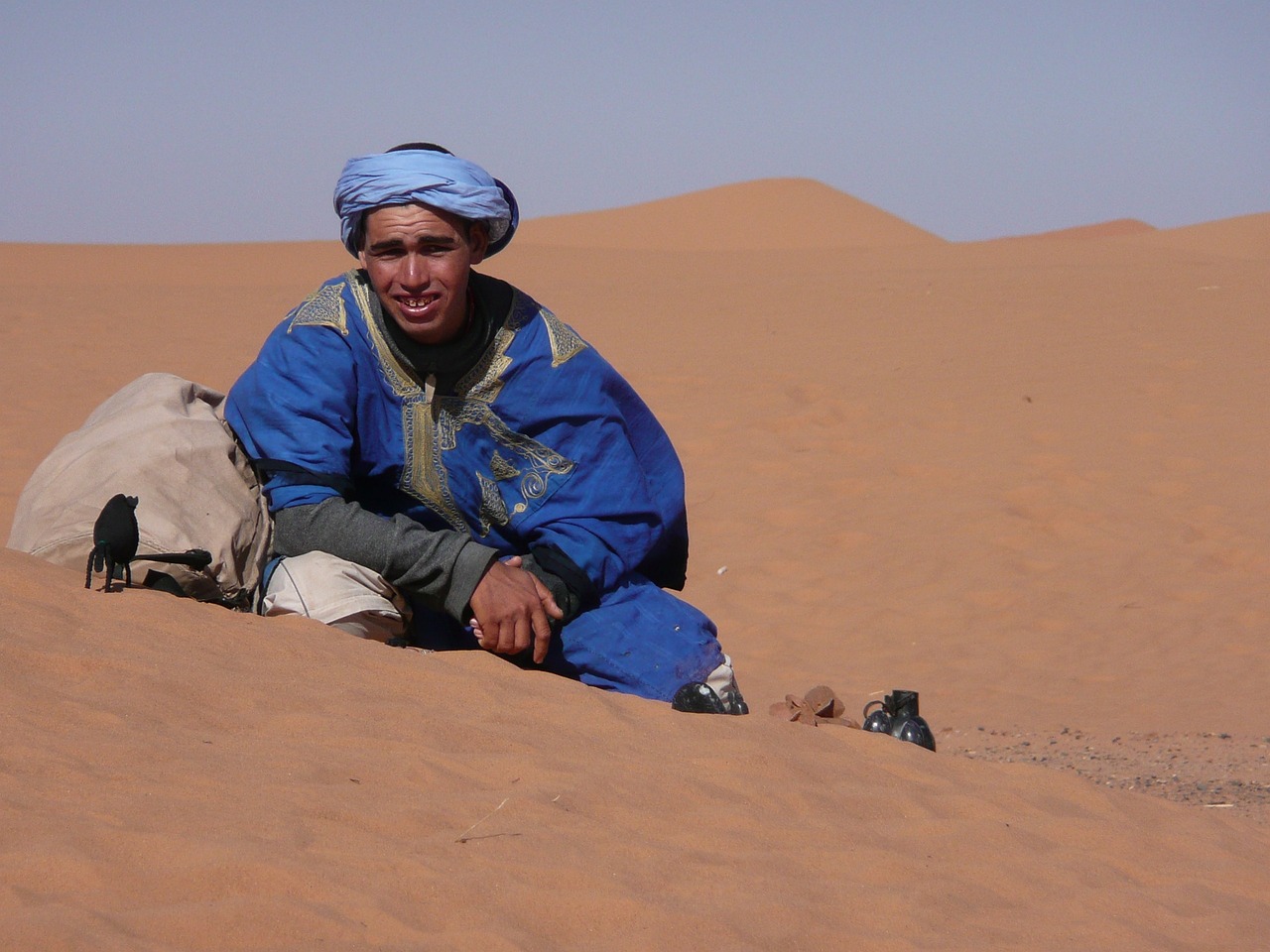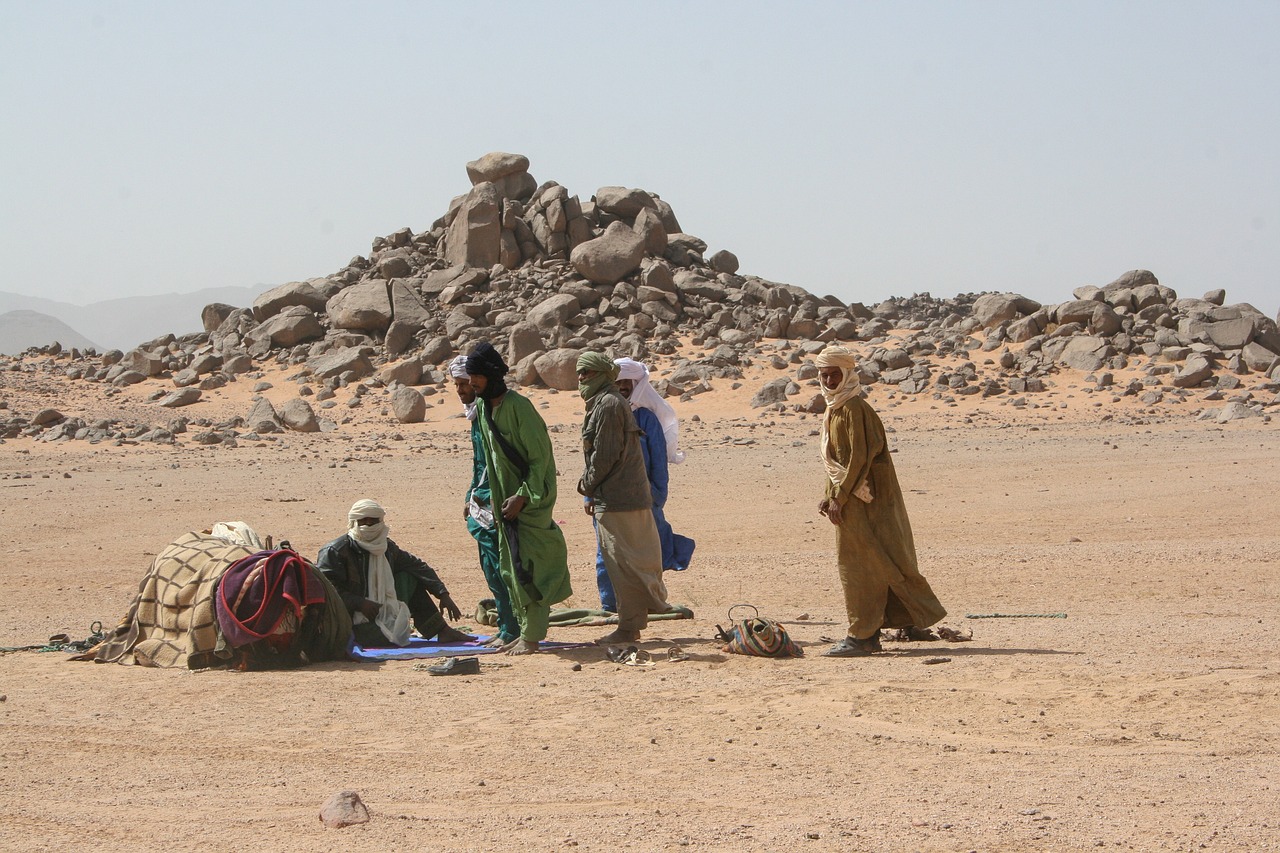The Tuareg in Algeria

The Tuareg in Algeria
The Tuareg or Kel Tamasheq are a nomadic Berber people living in the central Sahara and desert regions of North Africa. Many consider them to be the descendants of the prehistoric Paleoberbers. They speak Tamajaq, Tamasheq or Tamahaq, depending on the region. This people is confronted with forms of assimilation, both cultural and linguistic, as well as economic and political marginalisation, leading to armed conflict in the 1990s. Several agreements were signed to restore peace and development in these regions. Since then, many Tuaregs have given up nomadism to settle in the major cities of Mali, Niger and Algeria. We invite you to read this guide to find out more about this Berber population!
The origin and history of the Tuareg
The origin of the word "Tuareg" is still not really known. However, a number of hypotheses have been put forward. For some, the term comes from Arabic and means "abandoned by the gods". For others, it is derived from the name of a Libyan region called "Targa".Targa", meaning "Aw-Targa" (son of Targa) in Atargi Berber.
Despite the mystery surrounding the origin of this word, we can affirm that the Tuaregs are indeed of Amazigh (Berber) culture. There are two fundamental reasons for this. The first is the fact that they speak an ancient Amazigh dialect and the second is the Tifinagh alphabet they use. Both their dialect and their alphabet share the same linguistic basis as the Berber language known as Tamasheq or Tamajaq.
However, the Tuareg do not refer to themselves by this name. Instead, they use other terms such as :
- Kel Tamajeq meaning "those of the Tamajeq language",
- Imajaghen meaning "a noble and free people",
- Imuhagh,
- Imushagh,
- Kel Tagelmust (those of Tagelmust),
- Kel tefinagh (those of the tifinagh).
According to some Tuaregs, they are descendants of Tarik Ibn Ziab. The latter was the famous Berber conqueror who conquered Spain in the 9th century.

The territory of the Tuareg
The Tuareg live in several countries on the African continent. They can be found in Niger, Burkina Faso and Mali in the Sahara, and in Libya and Algeria in North Africa. This dispersal can be explained by the decolonisation that led to the creation of African states in the 1960s. Since then, they have been given a nationality and a passport.
The Tuareg are organised into several confederations and tribes. They number around 2,650,000, including 2,000,000 in Niger, 500,000 in Mali, 152,000 in Algeria and 80,000 in other countries.
Social life and lifestyle of the Berber population
Traditionally, the Tuareg are monogamous and intermarry. However, some individuals now have several wives under the influence of Islam.
To get married, the Tuareg husband is obliged to bring his wife's family a dowry consisting of camels and oxen. The wife's family provides the newly-weds with a tent and its furnishings. In the event of divorce, the tent reverts to the bride and the husband is left without a roof over his head.
In terms of dress, the Tuareg wear a long garment called a "taguelmoust" and a chèche. The latter is a type of turban about 4 to 5 metres long that they wrap around their heads to protect themselves from the wind, rain, sand, cold and sun. It is available in several colours, including :
- red ;
- green
- yellow
- indigo
- white.
The last two colours are not worn like the others and have a specific meaning. The indigo chèche is made from linen and is worn on festive days. It is because of this colour that they are known as the "blue men". It is also recommended when the weather is cool. White is worn on a particular day as a sign of respect. A Tuareg man never takes off his turban.

The main activity of this Berber population is livestock rearing. They are nomadic breeders who rear cattle and goats. In search of pasture for their livestock, they roam the desert on their dromedaries. They are also accompanied by a breed of dog, notably a Tuareg greyhound or sloughi, for their safety.
The Tuareg and their culture
The Tuareg distinguish themselves through their culture wherever they go. Every year, they organise a number of festivals to publicise and/or promote their culture. One such festival is the Sabiba. This is a cultural festival held annually in Djanet, Algeria. It dates back over three millennia and brings together all the Tuaregs of the Tassili N'Ajjer and neighbouring countries. It's a unique opportunity to discover the cultural values of Tuareg country. Music, song, dance, jewellery displays and the brandishing of weapons are just some of the events that make this an unforgettable occasion.
Beyond Algeria's borders, festive events are organised in other countries. Some examples include
- the desert festival at Essakane, near Timbuktu in Mali ;
- the Essouk festival, near Kidal in Mali;
- the traditional Gani and Bianou festivals in Agadez (Niger).
In addition, the tea ceremony, the impurity of the pig and prayer are cultural values of this people. It should be pointed out that they are inherited from the Arabs. As for tea, it was introduced at the beginning of the 20th century and is used to show hospitality to visitors.

In short, the Tuareg are a nomadic Berber people living in the central Sahara and North Africa. Despite cultural and economic challenges, the Tuareg have preserved their identity, their language and their nomadic way of life. Through their festivals and traditions, they continue to celebrate and share their rich cultural heritage, making them a fascinating community in the heart of Africa.
